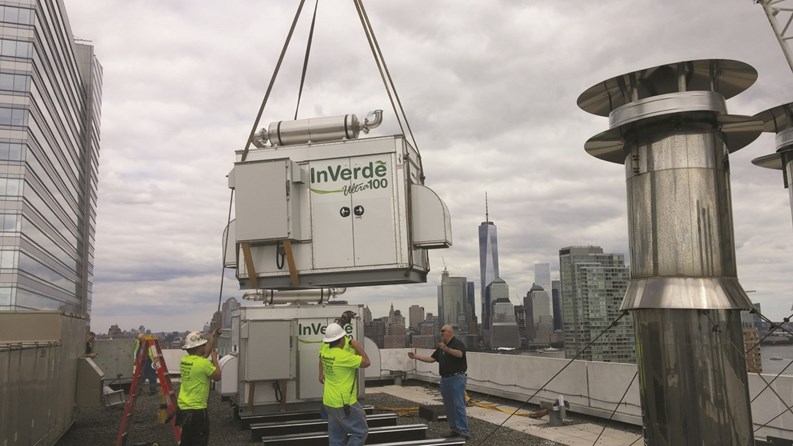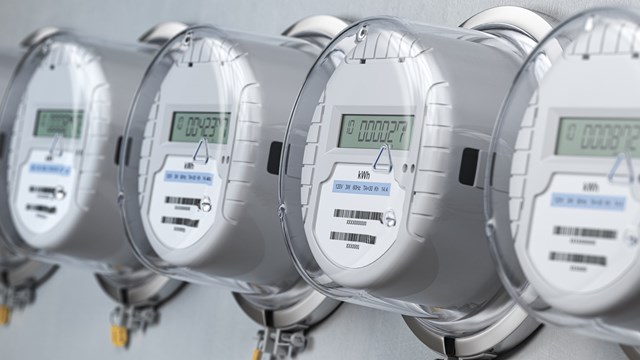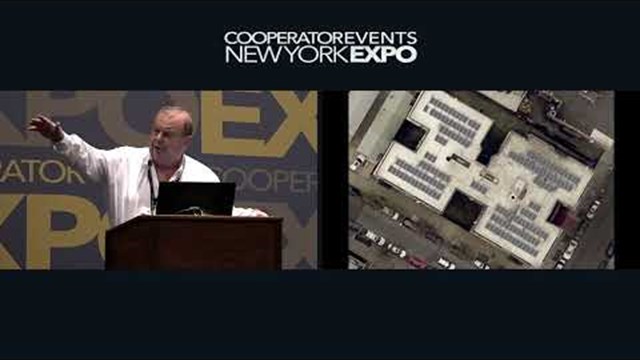The process of producing energy for metropolitan area co-ops and condos has dramatically evolved in recent years, advancing to the point in which Lewis Kwit, the president of Energy Investment Systems, based in Manhattan, makes a relatively accurate—and amusing—comparison. “The old way of using a traditional energy-producing system is like using a chainsaw to cut butter,” he chuckles.
Specifically, though, what are these new energy-producing technologies? Can they save money, long term and short term, for a co-op, condo or HOA? How can they be acquired when it seems, quite literally, as if major commercial energy suppliers are the only option available? Some co-op and condo communities are exploring these questions, and coming up with solutions that are saving them both energy and money. In New York, most co-ops and condos receive energy from Con Edison, or a similar secondary supplier, an energy service company or ESCO. Many property managers and HOAs, however, are taking some of these matters into their own hands—so to speak—through implementing co-generation technologies.
Some Definitions
By definition, co-generating buildings produce a portion—sometimes a larger portion; sometimes smaller—of the energy required to operate, on their own with the appropriate equipment, relying on major suppliers only for the balance of what they cannot produce. Sometimes, they even sell surplus energy back to the suppliers, making a profit from their efficiency.
In reality, co-generation has existed for decades; it has, though, required time to gain support and visibility. In fact, many people aren’t fully aware the technology exists today. For those who do not, co-generation is the use of natural gas-fueled energy to create electricity, and is oftentimes called combined heat and power (CHP) because it delivers two forms of energy…electricity and hot/chilled water.
According to representatives at the EPA, “Combined heat and power technologies are efficient and clean approaches to generating electric power and useful thermal energy from a single fuel source. Combined heat and power is used either to replace or supplement conventional separate heat and power (SHP).”
Kwit explains how, in a traditional system, water is heated into steam which turns a turbine at an extremely high speed with a magnetic source in order to generate electricity. In these systems, most of the heat is wasted, heading up the smokestacks or—sometimes—into the river, also increasing environmental concerns.
To better understand CHP energy, Kwit explains, “It takes one British Thermal Unit (BTU),” he says. “It is like lighting a match, and in a traditional system, it takes 11,450 BTU to create 1 kW hour of electricity; however, in a co-generation unit, it would require 3,412 BTUs for the same amount of electricity.” This is due to higher efficiency and lack of wastefulness.
A co-generation unit is smaller; therefore, the technology recaptures the heat, and the energy is used for thermal purposes, like heating water and warming units in the winter season. Because electricity is fed into the building, the process lowers the power bill for each unit while at the same time reducing greenhouse gas emissions, having vast impact on environmental conditions.
“It is more efficient than traditional power companies, because there is not as much wasted energy,” says Kwit. “The hot water is pumped into the office…not fed out of cooling towers, like with many traditional energy plants.” Subsequently, these systems are used to supplement a traditional, local power company, and therefore save on residential electricity costs and also reduce negative environmental gas emissions.
Paying For Itself
Benjamin Locke, CEO of Tecogen, a national CHP technology manufacturer that installs and maintains high efficiency, ultra-clean combined heat and power products, says buildings that use a lot of hot water are best suited for a CHP system. “For example, not a lot of people take showers in an office building. But a large residential building, people take showers and do laundry so that’s a great candidate,” he says. Larger hotels, health care facilities, and athletic clubs would also benefit immensely from CHP systems “Everybody needs electricity, but you’re also making hot water because you’re capturing all the heat that’s generating when this engine’s running,” says Locke. Instead of wasting that energy like cars do through the tailpipe, it’s conserved and used in the form of hot water.
However, residential units are choosing this type of energy source more frequently, as well. Currently the drawback to CHP systems is their greater upfront cost, which can pose a financial challenge for co-ops and condos. Of course, over time, big savings can accumulate.
New York’s public officials do support these efficient technologies, as well. Governor Andrew Cuomo, for example, has come out in support of closing the Indian Point Nuclear Power Facility in Buchanan, New York, thus encouraging more widespread utilization of co-generation technology. A recent feasibility study by the Manhattan-based Energy Investment Systems—which provides efficient energy services and solutions to New York City and the Tri-State area—shows the results of switching from traditional energy systems to CHP in a 200-unit condo.
In a study by Rutgers University, the cost and benefit analysis shows 75 percent overall efficiency of CHP, and 51 percent of traditional; these statistical findings have the strong potential to directly and significantly impact co-op and condo monetary savings. According to Tecogen.com, “this same efficiency gain with combined heat and power is what helps an end-user cut his utility bills significantly…as much as 50 percent.”
“At a saving of 5 to 7 cents per hour for this type of condo or co-op building,” Kwit adds, “it will take approximately 3 years to pay back the initial investment. This translates into $36,390 dollars in savings per year, not including savings on heating water and the like, which would actually add another $45,000 in savings per year by using the waste heat from the CHP unit.”
“When power comes from off-site, you're only getting about 30 percent of the generated electricity at your plug,” says Stuart E. Weidie, president and chief executive officer for Blossman Gas, Inc., an energy supplier. “More than 30 percent of the energy is lost in production, and still another 30 percent is lost in transmission over power lines."
Getting in on the Deal
It order to host a combined heat and power energy system, a building requires quite simply a natural gas supply, a chimney (or some exhaust source for the heat production) and the unit itself. The idea behind CHP is self-sufficiency; a resident or building can have a semi- self-sufficient unit or an entirely self-sufficient unit. As combined heat and power is designed for buildings where there is a need for both electricity and hot water on site, some buildings may not need hot water. Again, while the cost over time is less expensive than that of traditional technologies, there is a high upfront cost in this type of energy.
Con Ed offers many incentive programs for commercial, industrial and residential customers, all depending on the size of the unit installed. Con Ed claims to ”pay over 800 participating customers who are able to temporarily reduce electrical usage when requested by Con Ed; a participating customer can earn up to $50,000 over a three-year period for every 100kW load relieved.
Today, more and more buildings are using the technology, and the numbers continue to grow each year. Co-generation is here to stay, as it seems. Specifically, according to Green Crown Energy, the United States aims to have “20 percent energy efficiency by co-generation by 2030.”
Wesley Strickland is a freelance writer based in Manhattan and a frequent contributor to The Cooperator.







4 Comments
Leave a Comment